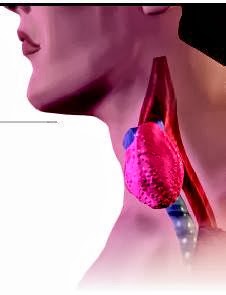 One in 10 adults suffers from hypothyroidism, with the prevalence of the condition higher in inland cities than in coastal locations, says a countrywide study.
One in 10 adults suffers from hypothyroidism, with the prevalence of the condition higher in inland cities than in coastal locations, says a countrywide study.
The seafood diet of coastal people may help prevent the disease, said experts in reaction to the findings.
The study, published in the Indian Journal of Endocrinology and Metabolism, shows that out of the 5,376 people who were surveyed, 10.95% were found to be suffering from hypothyroidism.
Hypothyroidism is a condition characterized by abnormally low thyroid hormone production, which affects the entire body system along with a person’s lifestyle.
“Of the 1,259 people studied in Mumbai, 9.61 per cent were diagnosed with hypothyroidism,” Dr Mahesh Padsalge, the city investigator of the study, said. “Out of these, 2.86 per cent did not even know that they were suffering from it.”
The study found that inland cities such as Bangalore, Delhi, Kolkata, Ahmedabad and Hyderabad had a higher prevalence of hypothyroidism compared to coastal locations such as the city, Goa and Chennai.
“It is just a theory and not a proven fact, but we believe that people in coastal areas have a lower risk of hypothyroidism because of iodine-rich diet,” Dr A G Unnikrishnan, principal investigator of the study, said. “Iodine is found in the head portion of fish and is an element required in the production of thyroid hormone.”
If left untreated, hypothyroidism can cause elevated cholesterol levels, an increase in blood pressure, an increased rate of cardiovascular complications, decreased fertility, and depression. In pregnant women, it can cause placental abnormalities and put the baby’s health at increased risk.
These symptoms are often confused with other disorders, making thyroid disorders one of the most under-diagnosed in the country.
The study revealed that women were three times more likely to be affected than men; of the affected population, 15.86 per cent were women and 5.02 per cent men. The finding was especially true for those in midlife, that is the age bracket of 46-54 years.
Researchers are still trying to figure out why women are more prone to the disorder.
“Thyroid disorders in India are characterized by a high prevalence, minimal diagnosis, poor awareness and low involvement of doctors in treatment,” Unnikrishnan said. “There is a growing urgency to create awareness of thyroid disorders, the need for early and regular diagnosis and the importance of following a recommended treatment regime.”
Like diabetes, there is no permanent cure for most forms of thyroid disorders, but with medication and precise treatment, these can be controlled so that patients lead normal lives.
Source: Press display

